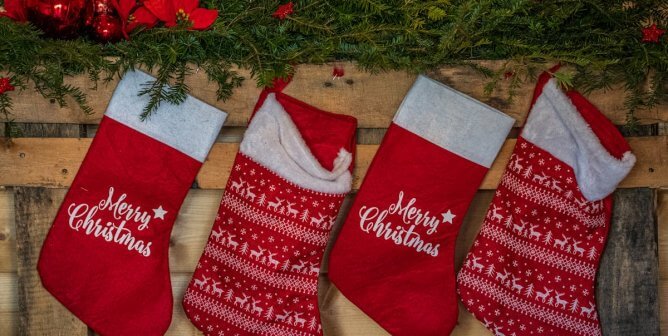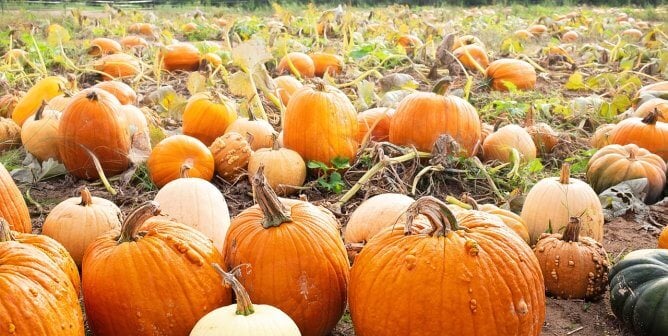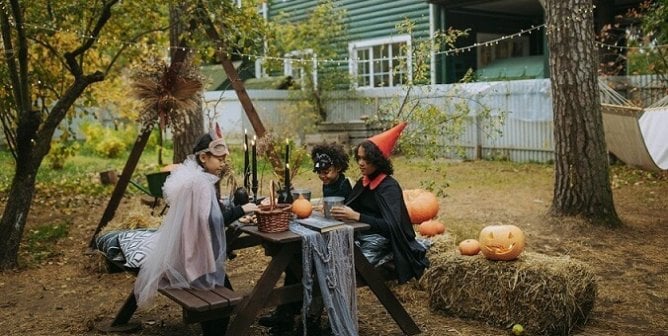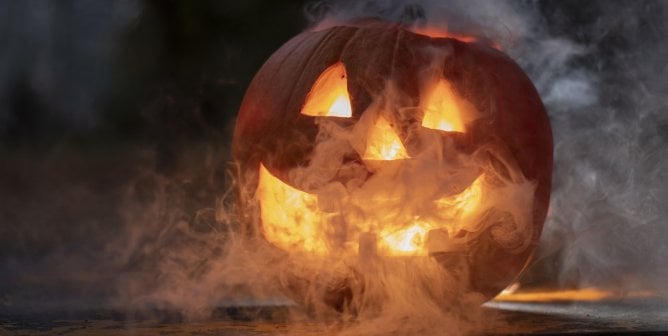Halloween shouldn’t be scary for animals—that’s why you should take these steps to ensure that the day is fun for everyone. In addition to caring for your animal companions and keeping them safe and secure, make sure that your Halloween treats and decorations are animal-friendly as well. That means choosing vegan treats that are free from animal flesh, cow’s milk, honey, and other animal-derived products. Here are our simple tips for celebrating an animal-safe Halloween:
1. Keep your animal companions safe and calm.
Frequent doorbell ringing and the commotion of numerous strangers at the door can cause animal companions stress and anxiety. It can also increase the risk that a scared animal companion will escape. Keep your cats and dogs in a secured room with soothing music or the TV on to help them stay calm. Make sure that all your animal companions have ID tags and are microchipped, and walk easily overwhelmed dogs before the sun sets to avoid increased stress.
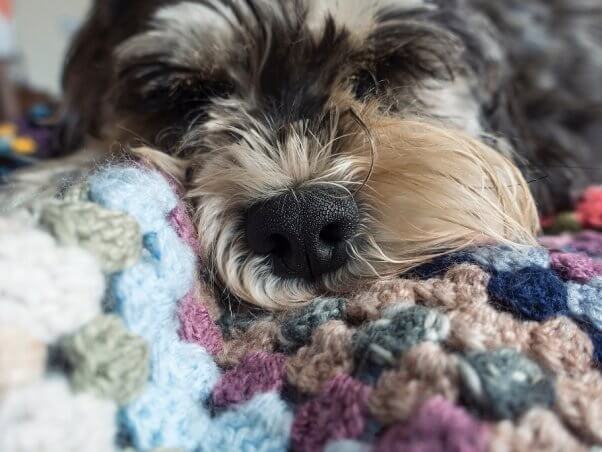 2. Leave dogs at home.
2. Leave dogs at home.
Kids screaming, crowded sidewalks, people in costumes, flashing lights—all of these things might be fun for humans who know what to expect on Halloween, but for dogs it can overwhelming and truly frightening. A scared dog is also dangerous for trick or treaters as their behavior can become unpredictable and even the friendliest dog may bite if they feel vulnerable.
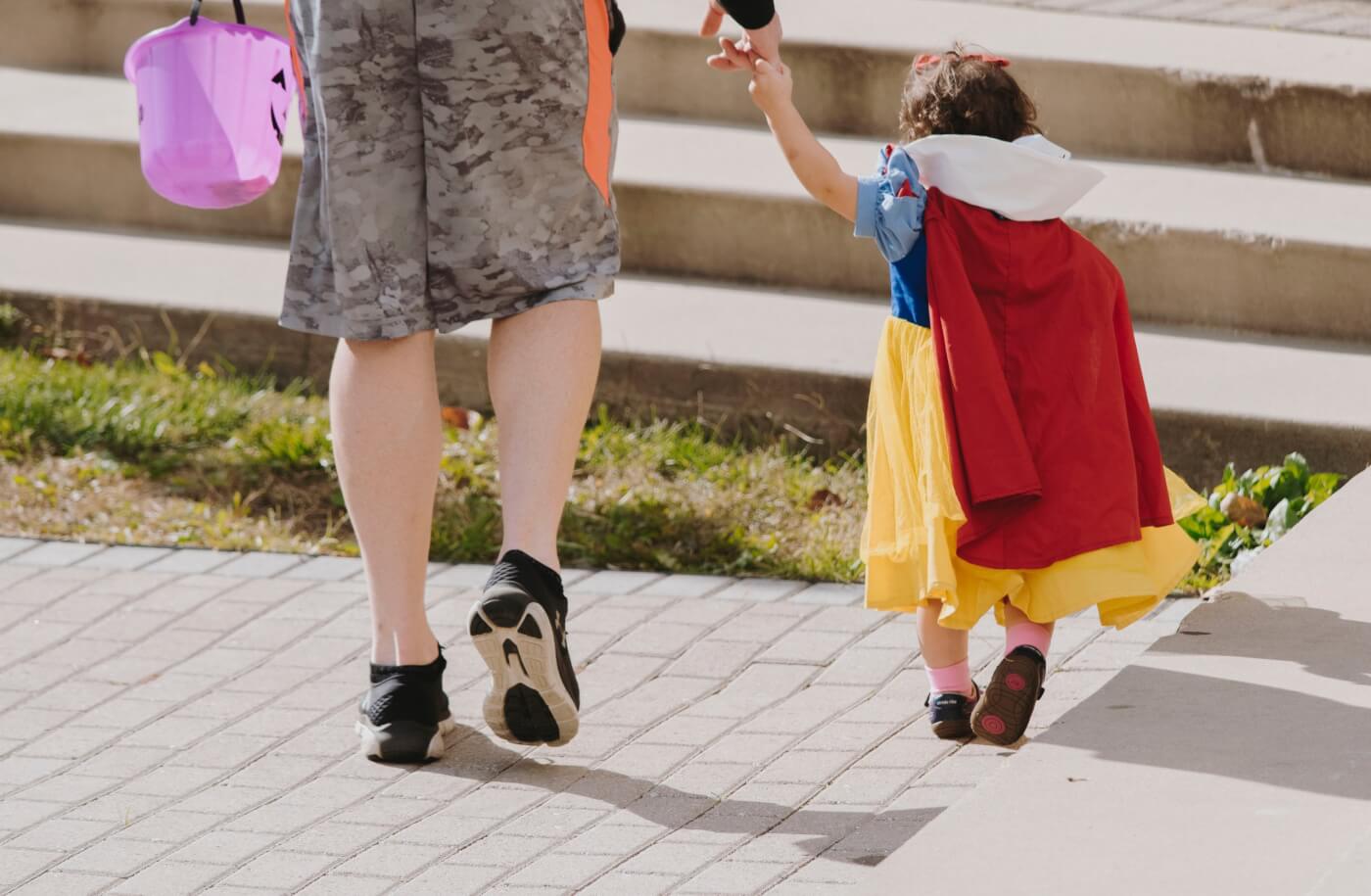
If you must bring your dog out on Halloween, make sure they are wearing a reflective or light up harness to make them visible to pedestrians and drivers. Keep an eye out for candy or chocolate on the ground, which could be deadly. It is also important to know your dog’s personality and limits when it comes to socialization and stimulation. Pay attention to their cues and bring them home before they’re completely tired out.
3. Never let cats roam outdoors unattended.
It’s never a good idea to let your cat roam around outdoors, but it’s especially dangerous around Halloween. Free-roaming cats are vulnerable to many dangers, including cars, other animals, diseases, and cruel humans. Before and during Halloween, these individuals often target black cats. Always keep your cats indoors, where they can be safe and happy, and only take them out on supervised walks if they enjoy them.
4. Skip the fake spider webs.
Fake spider webs are surprisingly strong and create a hazard for wildlife, as animals—especially owls and other birds, insects, and small mammals—can become entangled in them. Cats might also find spider webs enticing, and if the material is ingested, it can cause vomiting and intestinal obstructions, just as tinsel does.
5. Watch out for other dangerous decorations.
Be sure battery powered and electrical decorations are out of reach. Dogs, cats or other companion animals can get chemical burns or suffer intestinal blockage from chewing on batteries. They can suffer potentially fatal electric shocks from gnawing on cords. Other props such as rubber eyeballs can be a choking risk, and glow sticks and fake blood can be poisonous.
6. Instead, decorate with natural materials.
Natural materials such as pumpkins, gourds, corn stalks, hay, and leaves are animal-safe options for fall decorating. Just keep corncobs away from your animal companions, as they can cause digestive problems such as intestinal blockages and upset stomach. Dogs should also be kept away from decorative corn that’s used year after year as it may have mycotoxin-producing mold or mildew, which can cause vomiting and neurological problems.
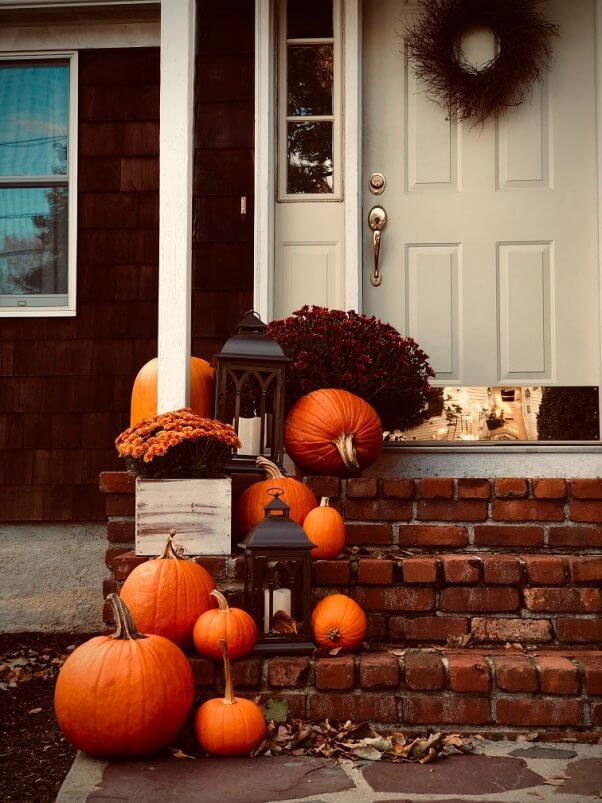
7. DIY.
Make DIY candleholders from recyclables by decorating glass jars or metal cans. (Just be sure to dispose of them properly after the holiday by placing lids on the jars or crushing cans prior to placing them in a recycling bin.)
8. Choose vegan Halloween treats.
Choose vegan candy—such as Smarties or AirHeads—to hand out to trick-or-treaters. Have fun with your food by making cute and creepy Halloween-themed recipes, or go the traditional route and make pumpkin everything.
9. Use vegan candles.
Vegan soy-based candles or fire-safe LED candles are great options for lighting your jack-o-lanterns or decorating indoors. Avoid those made from tallow, beeswax, and paraffin wax. Beeswax stolen from beehives causes many bees to be killed or lose their wings or legs because of haphazard handling. Tallow is a slaughterhouse product, and paraffin wax is a petroleum product associated with health risks.
10. Leave the dressing up to the humans.
Halloween costumes on animal companions can cause stress and be potential choking or tripping hazards. They can also limit mobility and sight, leading to otherwise avoidable injuries. A simple bandana or a Halloween-themed collar or harness are better options—or better yet, just leave dressing up to the humans.
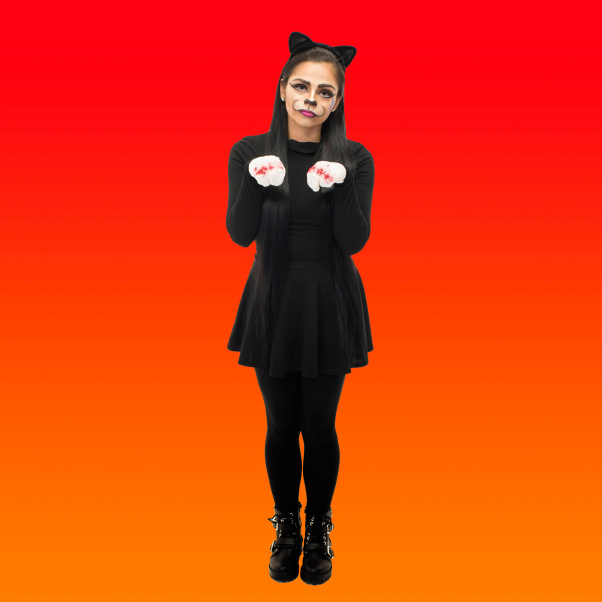
11. Keep the candy away from animal companions.
Candy, especially chocolate and sugar-free varieties, contains ingredients that are toxic to animal companions. Keep it in a safe location, and don’t set out a bowl of candy as a centerpiece. Candy wrappers should be properly disposed of, as ingestion can cause a dangerous bowel obstruction that may require surgery to correct.
12. Use your jack-o-lantern to advocate for animals.
PETA’s fun animal rights–themed stencils will help you carve a statement into your pumpkin. After Halloween, leave your jack-o-lantern in the yard for the squirrels to enjoy. (Just make sure that it hasn’t become moldy, and remove any wax remnants.) Be sure to keep carved pumpkins away from animal companions, as they can quickly grow toxic mold and large chunks or rinds can become lodged in an animal’s intestinal tract. Don’t bleach your pumpkins either, as this is dangerous to wildlife if ingested.
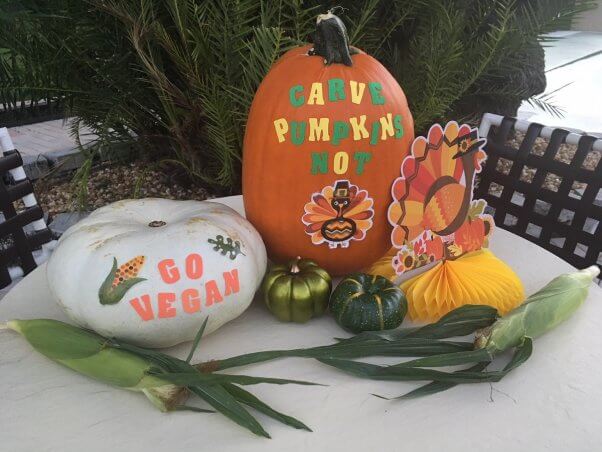
You weren’t born purrfect—you’re not a cat, after all. So if you’d like some vital tips on keeping felines happy and healthy, get your paws on PETA President Ingrid Newkirk’s new cat book. Order your copy today to learn how to earn your (tabby) stripes.
As an Amazon Associate, PETA earns from qualifying purchases. If you buy something after clicking the Amazon links on this page, a percentage of the qualifying purchase will be donated to PETA and help us protect more animals from exploitation.
Text VEG to 73822 to get the latest vegan lifestyle tips, recipes, and urgent action alerts texted right to your phone.
Terms for automated texts/calls from PETA: https://peta.vg/txt. Text STOP to end, HELP for more info. Msg/data rates may apply. U.S. only.



